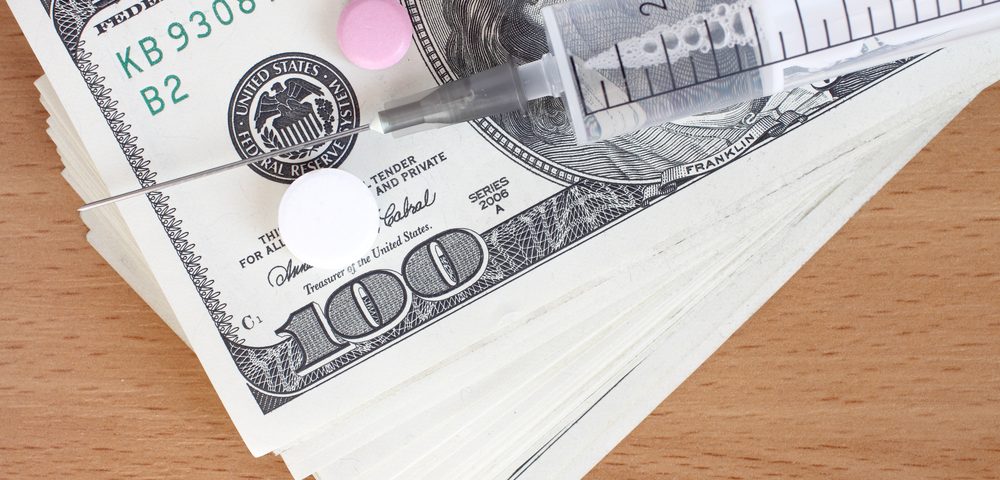A qualitative study has proposed nine recommendations from breast cancer survivors about how to reduce the financial burden associated with the disease, which include changes to insurance, supportive services, financial assistance, and protective policies.
The findings of the study, “Patient recommendations for reducing long‐lasting economic burden after breast cancer,” were published in the journal Cancer.
In the U.S., breast cancer patients experience a considerable financial burden, even compared with patients with other types of cancer. These economic burdens are higher for breast cancer survivors experiencing treatment side effects such as lymphedema (swelling caused by fluid accumulation), which is the most common side effect of breast cancer treatment. Lymphedema is estimated to affect up to 35% of breast cancer patients in the U.S., and results in an estimated $14,877 in out-of-pocket costs during the first two years after its diagnosis.
“Cancer survivors with public insurance experience even greater economic burden than those with private insurance, which is exacerbated for those who have lymphedema, because many public insurance plans do not cover compression bandages or garments for self‐management of lymphedema,” the investigators wrote.
Although previous studies proposed strategies to reduce the financial burden linked to breast cancer, recommendations came from healthcare providers or financial advisers, and not from patients.
In this study, a group of researchers from the Johns Hopkins Bloomberg School of Public Health carried out a qualitative study to gather patients’ perspectives on how to reduce the financial burden associated with breast cancer.
The study gathered testimonials from 40 long-term breast cancer survivors living in New Jersey and Pennsylvania in 2015. Participants were selected to ensure that the range of age, socioeconomic status, and lymphedema severity were representative of the entire U.S. population.
Semi-structured interviews were carried out to find out the economic challenges patients faced after being diagnosed with breast cancer, the type of financial supports they used, and their recommendations to minimize those costs.
From the 40 breast cancer patients interviewed, 27 offered recommendations to reduce the financial burden linked to breast cancer and serious treatment side effects. From the remaining 13 patients, 10 did not provide any recommendations, and three offered recommendations unrelated to reducing the economic burden associated with cancer.
Nine basic recommendations emerged from four different areas: expanding affordable insurance policies, especially to cover the costs of lymphedema treatment (among the 60% who had lymphedema); providing supportive domestic help; providing financial assistance from cancer diagnosis throughout treatment; and developing policies that would promote employment preservation among patients.
More specifically, the nine actionable recommendations offered by patients were summarized by researchers as:
- Provide assistance about insurance coverage and ways to navigate changes when switching to a new insurance provider;
- Ensure high-quality insurance that covers required and elective cancer-related services with low co-pays, premiums, and deductibles;
- Expand insurance coverage for lymphedema-specific materials and management, including long‐term physical therapy, and complementary and alternative medical treatments;
- Address psychosocial costs by expanding support groups and buddy services;
- Expand the availability of home health care services after cancer treatment;
- Provide domestic assistance with household chores, childcare, and transportation;
- Expand eligibility for financial aid and social services to those who are not in poverty;
- Provide financial counseling or navigation throughout the diagnosis and treatment process;
- Expand policies that protect employment and medical leave to offer more acceptable leave time.
“No one should have to make a choice between their health and their money. Yet breast cancer survivors face incredibly high prices that can lead to severe financial hardships, even bankruptcy,” Lorraine T. Dean, ScD, assistant professor in the Bloomberg School’s Department of Epidemiology and lead author of the study, said in a press release. “These recommendations offer ways to adapt a range of policies and practices that would make it more likely that breast cancer survivors can afford and attain the care they need.”
Several states in the U.S. (California, Louisiana, Maryland, North Carolina, and Virginia) have passed legislation to expand existing insurance coverage for lymphedema treatment. However, for now, the U.S. Congress has not yet approved this legislation for the rest of the country.
“Without changes, out‐of‐pocket costs will continue to be a challenge for the growing number of breast cancer survivors in the United States. This qualitative study adds to the literature by representing the patient perspective on reducing economic burden after breast cancer and providing nine specific recommendations for changes to insurance, supportive services, financial assistance, and protective policies,” the researchers wrote.
“The current recommendations are actionable and should be explored further in testable policy and programmatic interventions. Future studies might consider comparative viewpoints of these recommendations from various members of the health care, insurance, and policy‐making communities,” they added.

